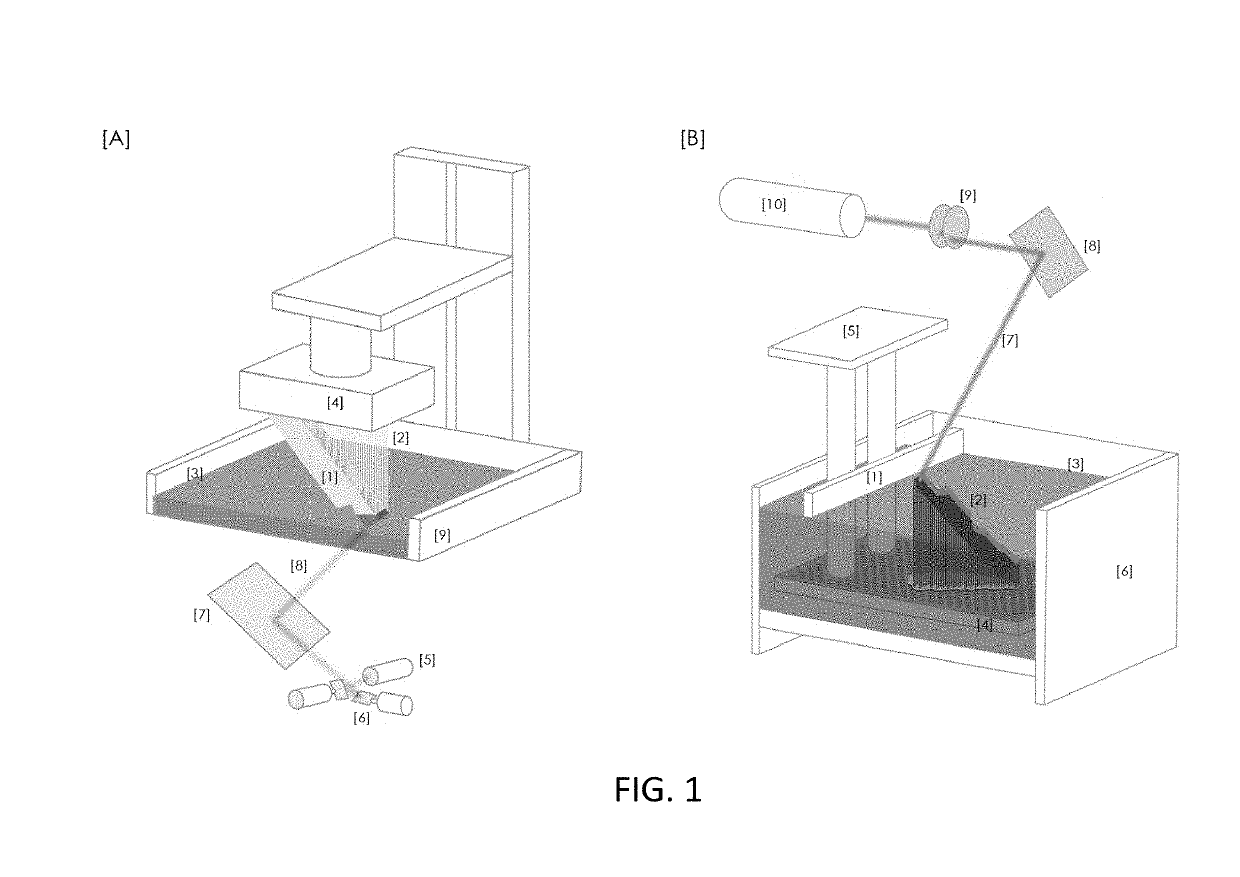System and method for enhanced stereolithography 3D printing
a stereolithography and enhancement technology, applied in the field of systems and methods for enhancing stereolithography 3d printing, can solve the problems of imposing a cost on optical systems, imposing a physical limit to the level of miniaturization that can be achieved, and most sla 3d printers exhibit poor printing precision and accuracy
- Summary
- Abstract
- Description
- Claims
- Application Information
AI Technical Summary
Benefits of technology
Problems solved by technology
Method used
Image
Examples
Embodiment Construction
[0082]Referring now specifically to FIG. 6, one representation of the invention is an apparatus [A], [B] comprising a source of UV photons [1], one or more stand alone angular momentum generators [2] configured to deliver UV photons with optimized spin angular momentum (SAM), org orbital angular momentum (OAM), and / or a SAM / OAM [3] combination to target organic or inorganic substance and / or impurity. The angular momentum generator can have different forms [a], [b], [c], and [d].
[0083]Referring now specifically to FIG. 6 [2a] UV photons can acquire optimized OAM with a Spiral Phase Plate made of UV transparent material with refractive index n, having an inhomogeneous thickness, h proportional to the azimuthal angle Φ
h=hsφ2π+h0
[0084]where hs is the step height, and h0 is the base height. When a beam of electromagnetic radiation (Gaussian) with plane phase distribution passes through this OAM generator, an optical vortex charge q is imprinted according to
q=hs(n-n0)λ
[0085]This means tha...
PUM
| Property | Measurement | Unit |
|---|---|---|
| fixed wavelength | aaaaa | aaaaa |
| fixed wavelength | aaaaa | aaaaa |
| germicidal wavelength | aaaaa | aaaaa |
Abstract
Description
Claims
Application Information
 Login to View More
Login to View More - R&D
- Intellectual Property
- Life Sciences
- Materials
- Tech Scout
- Unparalleled Data Quality
- Higher Quality Content
- 60% Fewer Hallucinations
Browse by: Latest US Patents, China's latest patents, Technical Efficacy Thesaurus, Application Domain, Technology Topic, Popular Technical Reports.
© 2025 PatSnap. All rights reserved.Legal|Privacy policy|Modern Slavery Act Transparency Statement|Sitemap|About US| Contact US: help@patsnap.com



